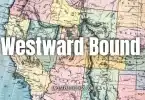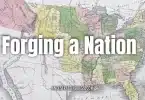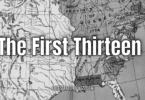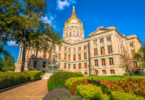The city of Richmond is the capital of the state of Virginia. It is the primary city of the Richmond Metropolitan Statistical Area, as well as the Greater Richmond Region. It was incorporated in 1742 and became an independent city in 1871. It has a population of about 204,000 people, making it the fourth most populous city in the state. Its metropolitan area has a population of about 1.2 million people, making it the third most populous such region in the state.
The area that is now Richmond was a key village of great importance in the Powhatan Confederacy before the Europeans came to North America. English colonists who were living in Jamestown briefly occupied the Richmond area from 1609 to 1611, before abandoning it. When it was later settled permanently by Europeans, it was named the capital of the Virginia colony in 1780, taking the place of the previous capital, Williamsburg. It was an important city during the American Revolution, with several historically significant things happening there during that time. The famous “Give Me Liberty or Give Me Death” speech made by Patrick Henry took place there at the St. John’s Church. The Virginia Statute for Religious Freedom, which was written by famous Virginia resident Thomas Jefferson, was passed there.
Richmond became the capital city of the Confederacy during the Civil War. In the 20th century, it had one of the nation’s first successful streetcar networks. In addition, present day Richmond is a hub for African American culture and commerce in the Jackson Ward neighborhood.
The very first successful and permanent English colony in North America was established near Richmond in 1607 at what was named Jamestown. Two years later, Captain Christopher Newport took some explorers up the James River to the Richmond area, which was the tribal capital of the Powhatan Native American tribe. The Powhatans are a famous tribe for being the people of Pocahontas. Her father was the leader of their tribe in the Richmond area.
The Virginia Company struggled for decades to make a stable, moneymaking settlement in the Richmond area. They eventually set up a successful ironworks there, but the territorial conflicts with the local Native Americans took much time and attention for this enterprise. Eventually, after a few decades of tribal conflicts, the settlement stabilized, more Europeans of English descent moved to the area, and it became a thriving city in the late 17th and early 18th centuries.
A local planter named William Byrd commissioned Major William Mayo to lay out the grid for Richmond in 1737. The city was named after the town of Richmond in England, near London (today, it is part of London). It was thought by the early settlers that the view of the James River that Richmond offered was incredibly similar to the view of the Thames River in England from Richmond Hill there. Incidentally, Richmond Hill in England was named after the ancestral home of King Henry VII, which was called Richmond, and was located in Northern Yorkshire.
Virginia’s colonial legislature was not decided on whether to participate in the First Continental Congress. Deciding whether or not to declare independence from Great Britain was a huge matter to consider, and Virginia was just not sure it wanted to be involved in such a significant—and possibly treasonous—change in the status of their colony. It was Patrick Henry’s 1775 speech where he famously said “Give Me Liberty or Give Me Death,” which he delivered in Richmond, that decided the matter of participation for Virginia. They would send delegates to the Continental Congress.
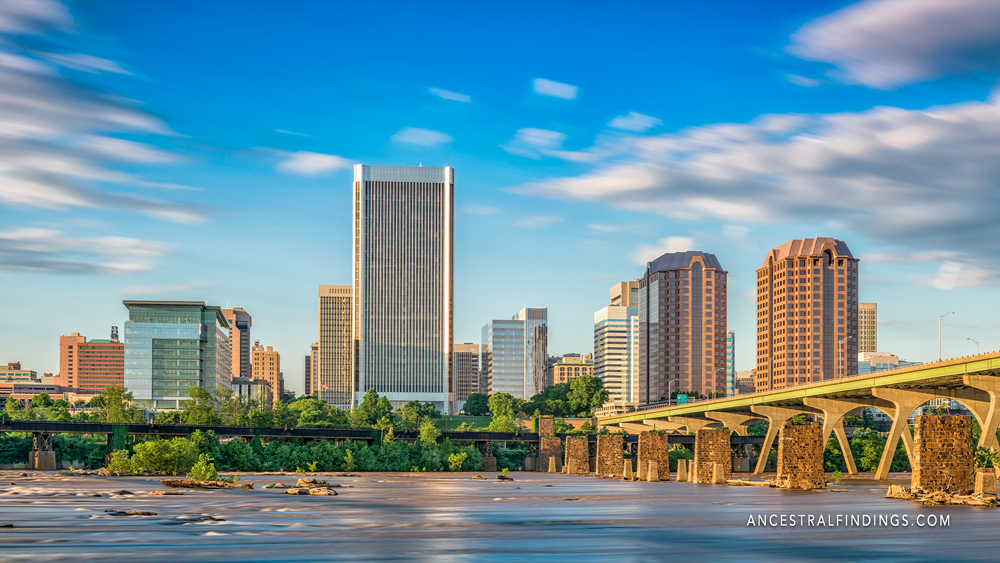
Because Virginia turned out to be so instrumental in the colonies winning the Revolutionary War, it is not clear if they would have won had Virginia not given the cause its support. During the Revolution, Virginia moved the capital from Williamsburg to Richmond in order to have a more centralized location in the colony for legislatures to go to. A secondary reason for the move was to accommodate the western movement of many of the colony’s residents at that time. A third reason was to protect the colonial capital from the British by moving it away from the coast and more inland.
The British got to Richmond, despite its more protected location. Knowing it was the new colonial capital, it became a more prized location for the British to destroy or to make submit, and they were determined to reach it. They did, in 1781, and burned the town to the ground under the command of Benedict Arnold, who had by that time moved his allegiance from America to England. Thomas Jefferson, who was the governor of Virginia at the time, was forced to flee the town with his young family while the Virginia militia did their best to defend the city.
After the war, Richmond bounced back quickly and was a thriving town once more by 1782. The capitol building for the state was built in Richmond and completed in 1788. The building was done in the classical Greek Revival style and was designed by Thomas Jefferson, with assistance from Charles Louis Clerisseau.
The city of Richmond was an important industrial center for the new United States after the Revolutionary War. George Washington helped design the James River and Kanawha Canal, going from Westham east to Richmond in order to help facilitate transferring cargo off the flat-bottomed boats in the James River to the ocean-going ships below. The new design allowed cargo that was leaving Richmond to bypass the river rapids on the Richmond side of it, and also provided a water route across the Appalachian Mountains to the Kanawha River, which went west to the Ohio River, and then into the important Mississippi River. This was a key innovation in the import and export industry in Richmond.
Because of this innovative design, the city of Richmond was able to become the home of some of the largest manufacturing companies in the country. Its early manufacturing industries included ironworks and flour mills. These early manufacturing businesses were the largest ones of their kind in the southern part of the new United States.


